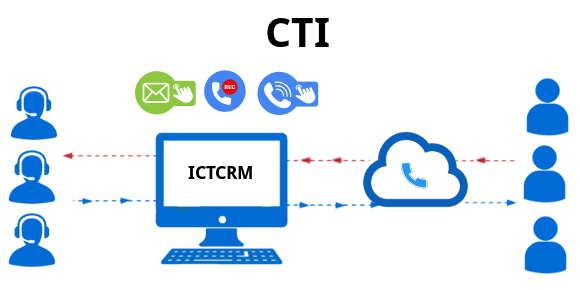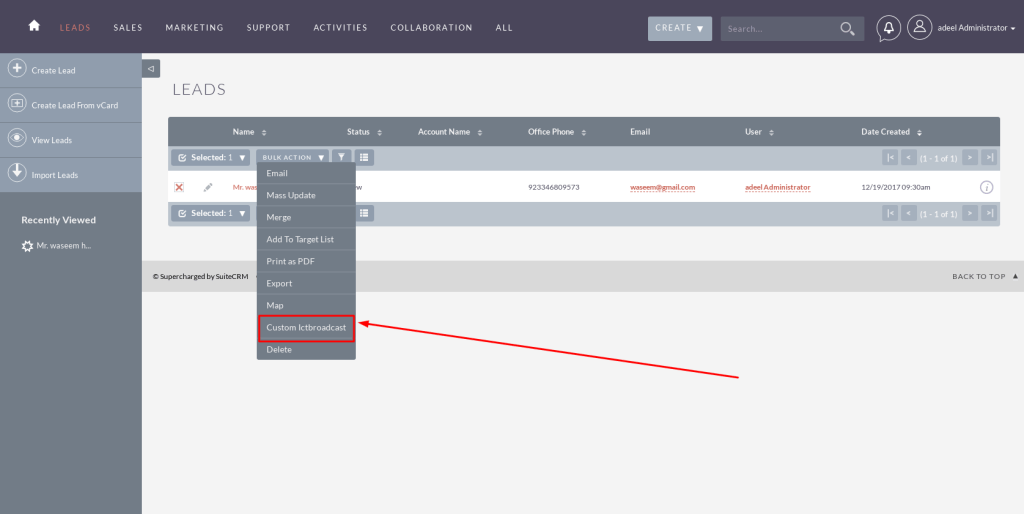Within the rapid and highly competitive realm of business, companies are acutely aware of the pivotal role customer engagement plays in attaining triumph. As technology continues its relentless evolution, enterprises are progressively embracing open-source Customer Relationship Management (CRM) systems that seamlessly meld telephony functionalities. This fusion marks a revolution, reshaping operations, enhancing customer interactions, and propelling revenue expansion. In the forthcoming article, we will delve deeply into the merits and possibilities presented by open source CRM, with integrated telephony, elucidating how this fusion has the potential to profoundly augment customer engagement.
I. Understanding Open Source CRM
Open source CRM refers to customer relationship management software that is built on open source code, allowing users to access, modify, and distribute the software freely. Unlike proprietary CRM systems, open source CRM solutions provide flexibility, cost-effectiveness, and an active community of developers and contributors who continually improve and enhance the software.

II. The Significance of Telephony Integration
The seamless incorporation of telephony into open-source CRM systems stands as a pivotal feature, bestowing organizations with an array of empowering functionalities. These encompass call management, call recording, automated call logging, and a spectrum of other capabilities. Through the harmonious union of CRM and telephony, enterprises can amalgamate their customer data and communication channels within a single, unified platform. This fusion not only bolsters efficiency but also fosters collaboration, ultimately raising the bar for customer service excellence. With the integration of telephony, organizations can efficiently streamline their operations and deliver a seamless, personalized experience to their valued customers.
III. Benefits of Open Source CRM with Integrated Telephony
a) Enhanced Customer Service:
The integration of telephony within CRM systems enables customer service teams to access real-time customer information, enabling them to deliver personalized support and efficiently resolve issues. This integration also facilitates essential features such as call routing, Interactive Voice Response (IVR), and automatic call distribution. As a result, customers can be promptly connected to the appropriate agents, ensuring efficient handling of their inquiries or concerns. By leveraging integrated telephony, organizations can enhance their customer service capabilities and optimize the overall customer experience.

b) Streamlined Sales Process:
Telephony integration enables sales teams to make and receive calls directly within the CRM system, eliminating the need for separate phone systems. This integration simplifies lead management, call tracking, and follow-ups, allowing sales representatives to focus on building relationships with prospects and closing deals.
c) Improved Collaboration:
Open source CRM with telephony integration fosters better collaboration among team members. Employees can access call recordings, notes, and call logs, providing comprehensive insights into customer interactions. This shared knowledge base enhances cross-departmental communication and ensures a consistent customer experience throughout the organization.
d) Data-driven Decision Making:
By consolidating customer data from telephony and CRM systems, organizations gain valuable insights into customer behavior, preferences, and trends. Analyzing this data helps businesses make informed decisions, optimize marketing strategies, and tailor their products or services to meet customer expectations.
IV. Implementing Open Source CRM with Integrated Telephony
a) Choosing the Right CRM Solution:
Selecting an open source CRM solution with telephony integration requires careful consideration. Factors such as scalability, customizability, ease of use, and community support should be evaluated to ensure the chosen CRM system aligns with the organization’s specific needs.
b) Integration and Configuration:
Once the CRM system is chosen, proper integration with the telephony infrastructure is crucial. This process involves configuring call routing, mapping fields, and synchronizing data between the CRM and telephony systems. Collaborating with experienced IT professionals or utilizing the expertise of the open source community can streamline the integration process.
c) Training and Adoption:
Successful implementation of open source CRM with integrated telephony requires proper training and user adoption. Employees should be trained on how to leverage the CRM’s telephony features effectively, ensuring they can make the most of the system’s capabilities to enhance customer engagement.
V. Case Studies and Success Stories
Illustrating the real-world impact of open source CRM with integrated telephony, this section explores case studies and success stories of organizations that have leveraged this technology to achieve significant improvements in customer engagement, sales performance, and overall business success.
VI. Future Trends and Innovations
As technology continues to advance, the future of open source CRM with integrated telephony looks promising. This section explores emerging trends, such as artificial intelligence-powered voice assistants, sentiment analysis, and omni-channel communication, which have the potential to further revolutionize customer engagement and reshape the CRM landscape.
Conclusion:
Open source CRM with integrated telephony offers a powerful solution for organizations seeking to boost customer engagement. By combining CRM functionalities with telephony capabilities, businesses can enhance customer service, streamline sales processes, foster collaboration, and make data-driven decisions. As technology evolves, the integration of open source CRM with telephony is poised to play an increasingly vital role in improving customer engagement and driving organizational success.
Leveraging Open Source in ICT
